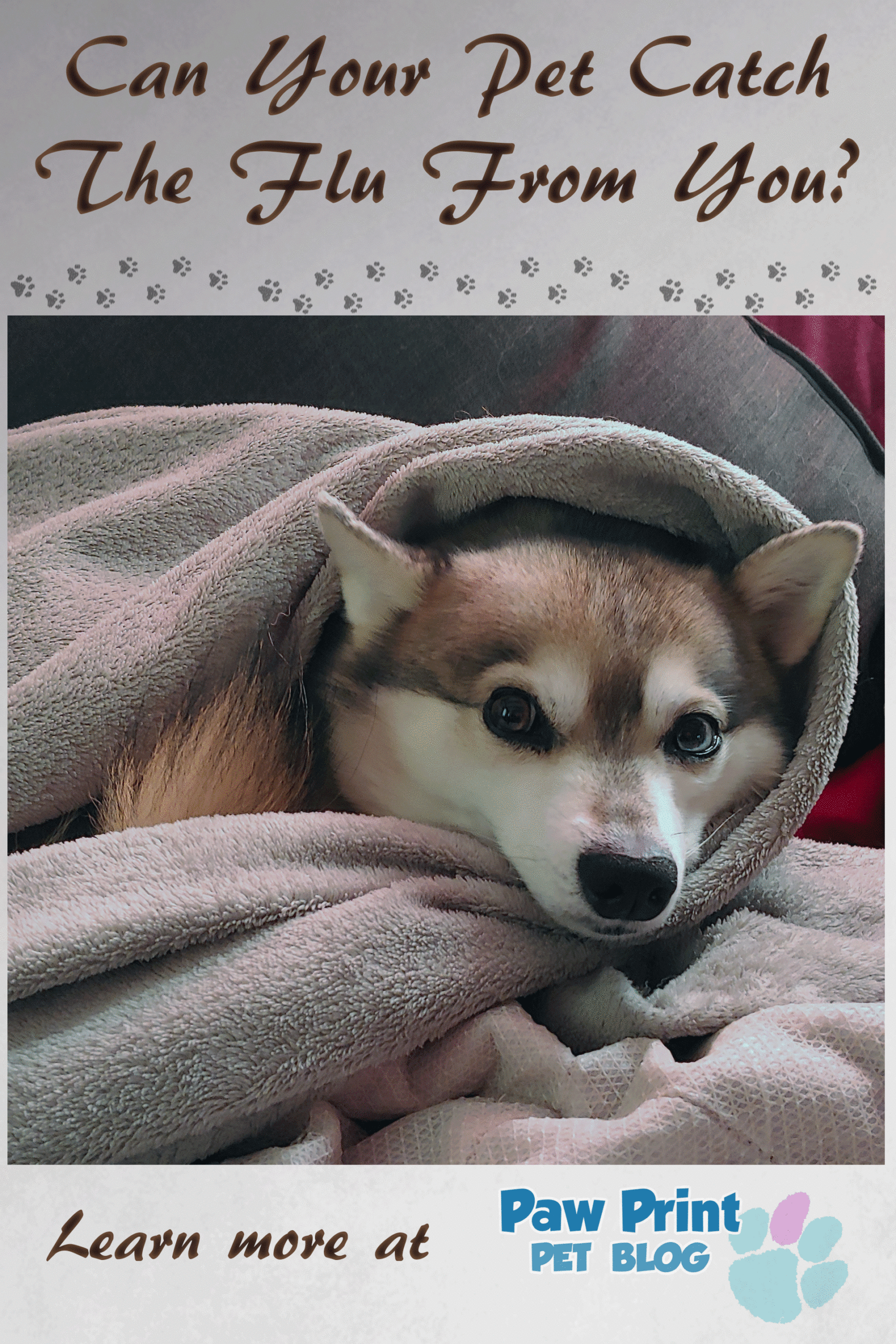Hot chocolate, warm puppy snuggles, sweater weather and…the flu!? Fall is officially upon us. If there’s one thing worse than being sick, it’s watching our beloved pets suffer through not feeling well! Hey, I know first hand. I’ve been spending the last week plus nursing my senior papillon, Kitsune, through an IVDD flare. Did you know that there’s are versions of the flu virus that infects dogs (Canine influenza), and that there is increasing evidence that, in rare cases, pets may be able to catch the flu from their human companions?
Post Contents:
Zoonosis
Zoonosis is a term that refers to an infectious disease that can be transmitted between animals and humans. Examples of zoonotic diseases include anthrax, Ebola, E.coli infections, malaria, Lyme disease, Rocky Mountain spotted fever, and the plague. Normally, when worrying about zoonosis, people are mostly concerned about humans becoming infected with diseases that can be passed on from animals. However, reverse zoonosis, or the passing of diseases from humans to other animals, sometimes occurs as well.
Reverse Zoonosis and The Flu
 The first cases of domestic pets catching the flu from humans occurred in 2009. Two cats developed a severe respiratory disease and sadly, both passed away. Testing after their deaths confirmed that the cats were infected with the H1N1 virus, most likely caught from an infected human.
The first cases of domestic pets catching the flu from humans occurred in 2009. Two cats developed a severe respiratory disease and sadly, both passed away. Testing after their deaths confirmed that the cats were infected with the H1N1 virus, most likely caught from an infected human.
Researchers from Oregon State University released a press release back in 2012 which stated that, in some rare instances, humans appear to have passed the H1N1 flu virus to cats and other animals, some of which have died of respiratory illness. Researchers suggest that people with influenza-like illness distance themselves from their pets.
Only 13 cats and 1 dog were confirmed to have developed pandemic H1N1 in the years 2011 and 2012. An unspecified number of ferrets have also contracted the disease. It’s safe to assume that the total number of pets effected is probably higher, with a majority of cases most likely going unreported and/or unconfirmed.
Canine Influenza
There are currently two versions of influenza that can commonly impact dogs. H3N8 started out as equine (horse) flu, but is now transmittable between dogs. It was first reported to cause illness in dogs in 2004. Canine influenza H3N2 originated in birds, but is now also transmittable between dogs. H3N2 is also known to be able to infect cats. This version of canine influenza was first detected in 2007 in South Korea. By 2015 it had made its way into the US. So far, there are no cases of either H3N2 or H3N8 causing sickness in humans.
No matter what version of the flu your dog catches, the symptoms are similar and can include a cough, fever, runny nose, reduced appetite, general lethargy, and eye discharge. A majority of dogs will recover on their own within a week or two. However, some will require supportive care and, in rare instances, secondary infections and pneumonia can develop.
Dog Flu Treatment
The flu is a virus. Unless a secondary bacterial infection develops, your vet will most likely not use antibiotics to treat your dog’s flu. Supportive care is most common, especially ensuring that your dog remains comfortable and stays well hydrated during the duration of their illness. In most cases, like in people, your dog’s own immune system will eventually fight the flu off on it’s own.
Keep in mind that the flu can be highly contagious. If you suspect that your dog might have the flu, keep him/her away from other dogs if possible. When you call your vet, explain your dog’s symptoms over the phone. Tell your vet that you suspect your pet may have been exposed to the flu. Your vet may opt to treat your pet remotely, or preform a basic exam at your car, to avoid spreading the flu among other patients.
Final Thoughts
Viruses continually mutate, adapting to find ways to propagate and cause illness even as our immune systems and medical science seeks to eliminate them. If the swine flu pandemic taught us anything, it’s that zoonotic strains of the flu can pose some very real dangers. It’s currently unknown whether the human flu virus will begin to infect more pets, or if occurrences will remain rare. Either way, it’s important to remain vigilant and proactive when it comes to your pet’s health. If you notice any signs of illness, especially those that are severe or do not improve on their own in a short time, it’s probably best to give your vet a call. As much as snuggling with our dogs might help us feel better when we’re sick, when it comes to the flu it’s probably better to err on the side of caution and avoid close contact with our animal companions when we’re sick.
Comment below! Has your pet ever caught the flu? What are some precautions you take when you’re sick to avoid spreading your germs to human, and animal, family members?






No Comments